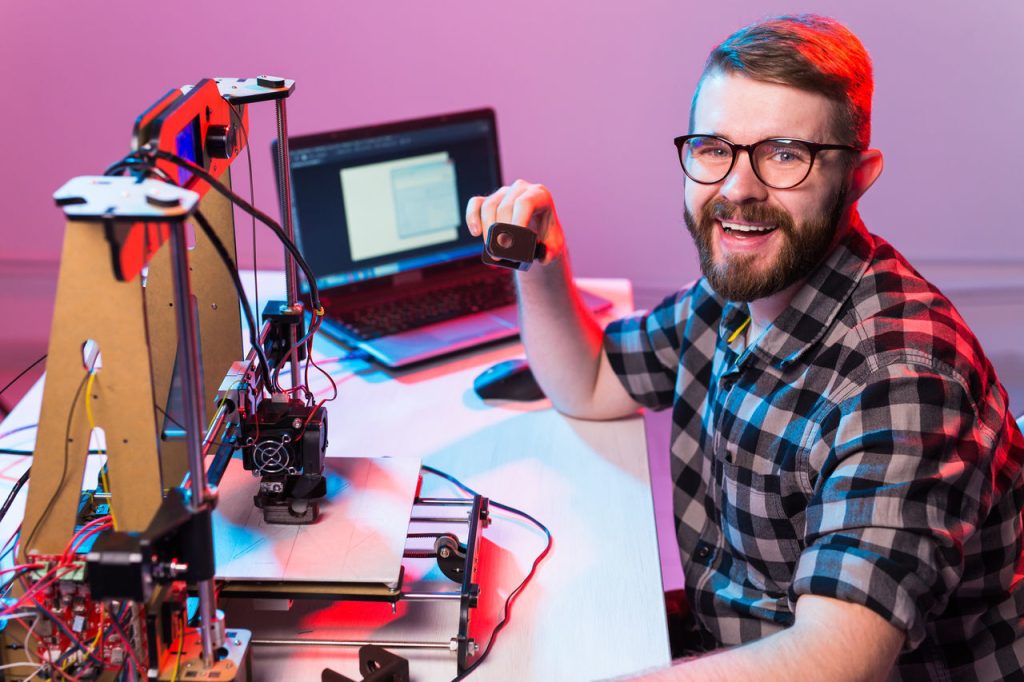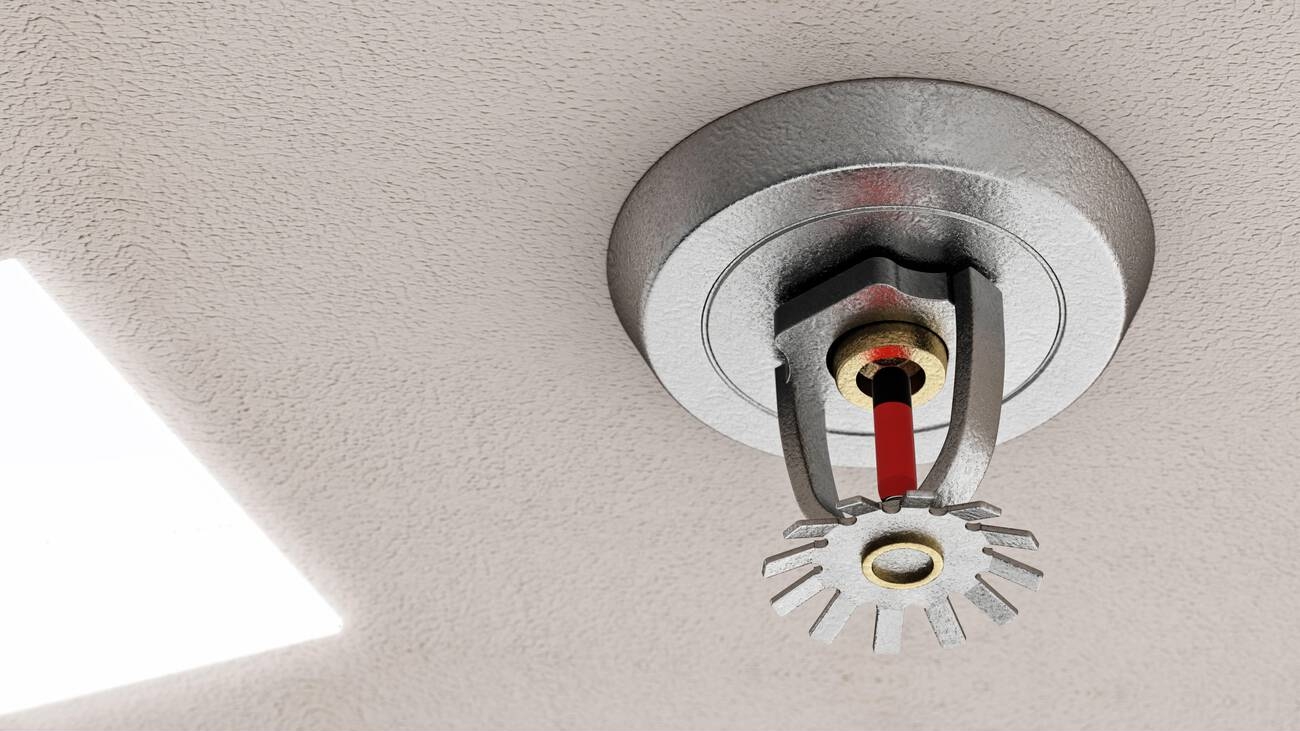Are you interested in diving into the world of 3D printing? Look no further! This beginner’s guide will walk you through everything you need to know.
From choosing the right printer for your needs to understanding the different types of printers available, we’ve got you covered.
We’ll also take you through the step-by-step process of 3D printing and explore how this technology is revolutionizing DIY projects.
So, get ready to unleash your creativity and explore the endless possibilities of 3D printing!
Choosing the Right 3D Printer for Beginners
If you’re a beginner, you should focus on choosing a 3D printer that fits on your desk and has a small build plate. This will make it easier for you to explore affordable options and understand beginner-friendly features.
When comparing different printing technologies, consider starting with fused deposition modeling (FDM) or stereolithography (SLA). FDM printers use thermoplastics and a heated nozzle to create layers, while SLA printers use a chamber of liquid photopolymer plastic and an ultraviolet laser. Both options are great for beginners due to their simplicity and accessibility.
Understanding Different Types of 3D Printers
Different types of 3D printers, such as FDM and SLA, offer options for beginners to explore when it comes to understanding printer capabilities and comparing different printing technologies.
FDM, or fused deposition modeling, uses thermoplastics forced through a heated nozzle to create layers. It is a popular choice for its affordability and ease of use.
On the other hand, SLA, or stereolithography, uses a chamber of liquid photopolymer plastic and an ultraviolet laser to produce each layer. SLA is favored by industries that require high accuracy and strength, such as automotive, medical, and aerospace.
Factors to Consider When Selecting a 3D Printer
When selecting a 3D printer, it’s important to consider factors such as the print area size, speed, resolution capabilities, and compatibility with your needs and expectations.
The price range for 3D printers can vary greatly, with low-cost desktop printers ranging from $100 to $400, while professional printers can cost up to $10,000 and industrial printers can reach up to $250,000.
Size considerations are also important, especially if you have limited space.
Popular 3D printing filaments include PLA, PA, ABS, PETG, and those with wood or carbon additives. These filaments offer different properties and strengths for your prints.
Step-by-Step Guide to the 3D Printing Process
To start the 3D printing process, create a CAD file to design the object and convert it into a format readable by the 3D printer.
Once you have your design, you’ll need to use slicing software to prepare it for printing. Slicing software takes your CAD file and converts it into a series of layers that the 3D printer can understand. It allows you to customize settings such as layer height, print speed, and infill density.
When using slicing software, it’s important to optimize print settings for different materials. Each material may require specific temperature settings, cooling options, or support structures.
Troubleshooting common 3D printing issues is also a crucial step. This includes addressing problems like warping, stringing, or failed prints.
Getting Started With CAD Software for 3D Printing
One of the first steps in starting your 3D printing journey is familiarizing yourself with CAD software for designing objects. CAD software, short for computer-aided design software, is essential for creating 3D models that can be printed.
These software programs offer a range of features to help you bring your ideas to life, such as precise measurements, shape manipulation, and realistic rendering. When choosing a CAD software, it’s important to consider the features it offers, as well as how user-friendly it is and whether it provides tutorials or support.
You can compare different CAD software options to find the one that best suits your needs and preferences. Once you’ve chosen a software, take advantage of tutorials and online resources to learn how to use it effectively.
Exploring 3D File Resources for Printing
If you’re looking for 3D files to print, you can explore websites like ALL3DP, Pinshape, and MyMiniFactory. These online repositories are 3D model marketplaces where you can find a wide variety of printable files. Whether you’re interested in printing toys, home decor, or functional objects, these websites have a vast collection of designs to choose from.
In addition to browsing these repositories, you can also utilize 3D scanning technology for printing. With a 3D scanner, you can capture real-world objects and convert them into printable files. This opens up a whole new world of possibilities for creating custom and unique objects.
However, it’s important to note that 3D printing can sometimes come with its own set of challenges. Common issues like warping, stringing, and layer adhesion can occur. Fortunately, there are plenty of resources available online to help troubleshoot these problems. Online forums, YouTube tutorials, and manufacturer support can provide valuable guidance and solutions.
Tips for Avoiding the Upgrade Spiral in 3D Printing
When considering 3D printing, it’s important to set realistic expectations and avoid getting caught in the upgrade spiral. It’s easy to get caught up in the excitement of exploring upgrade options, but upgrades don’t always guarantee better print quality or lower print time. Instead, focus on common 3D printing mistakes, troubleshooting, and maintenance tips. Take the time to calibrate your printer properly, ensure your filament is properly loaded and feeding correctly, and regularly clean and maintain your printer. By taking these steps and avoiding unnecessary upgrades, you’ll be able to achieve great results with your 3D prints without getting caught in the upgrade spiral.
The History and Impact of 3D Printing Technology
Take a moment to appreciate the history and profound impact that 3D printing technology has had on various industries and the world economy.
From revolutionizing manufacturing to enabling rapid prototyping, 3D printing has transformed the way we create and produce objects.
In the fashion industry, designers are using 3D printing to create intricate and unique clothing pieces, pushing the boundaries of creativity.
In architecture and construction, 3D printing is being utilized to construct complex structures with precision and efficiency.
Even the food industry has embraced 3D printing, with chefs experimenting with edible creations and personalized meals.
The possibilities are endless, and as 3D printing continues to evolve, it will undoubtedly bring about further innovations in these industries and beyond.
Advancements in 3D Printing and What They Mean for Beginners
The advancements in 3D printing technology mean that beginners now have access to more user-friendly and affordable printers. These advancements have not only improved the quality and precision of 3D printing but have also introduced new materials that can be used.
With the development of specialized filaments like biocompatible materials, it opens up a whole new world of possibilities for 3D printing in the medical field. Imagine being able to print customized prosthetics or even organs for transplantation.
The future of 3D printing holds immense potential, with ongoing research and development focused on further improving the technology and expanding its applications. As a beginner, you can now enter the world of 3D printing with confidence, knowing that the technology is more accessible and versatile than ever before.
Applications and Benefits of 3D Printing in Various Industries
3D printing offers numerous applications and benefits in various industries. It has revolutionized the way designers create unique and intricate designs in the fashion industry, allowing for greater creativity and customization. In the medical field, it is used for creating customized prosthetics and organs. The automotive industry has benefited from 3D printing by being able to create lightweight and complex parts, improving fuel efficiency and performance. In the construction industry, 3D printing has the potential to revolutionize the way buildings are constructed. It can create complex architectural designs and reduce construction time and costs. Overall, 3D printing has proven to be a game-changer in these industries, offering increased efficiency, customization, and cost-effectiveness.
Rapid Prototyping With 3D Printing: a Beginner’s Guide
Rapid prototyping with 3D printers allows for quick and efficient creation of prototypes for testing and evaluation purposes. The advantages of rapid prototyping include reduced time and cost compared to traditional manufacturing methods.
However, it is important to be aware of common 3D printing issues and how to troubleshoot them. One common issue is poor adhesion between layers, which can be resolved by adjusting the print bed temperature or applying adhesive solutions. Another issue is inconsistent extrusion, which can be solved by checking the filament diameter and adjusting the extrusion multiplier.
Optimizing print settings is crucial for achieving high-quality prototypes. This includes adjusting the layer height, print speed, and infill density.
Desktop Manufacturing: How 3D Printing Is Changing DIY
Desktop manufacturing has revolutionized the DIY community by providing affordable and accessible tools for creating custom objects. With the rise of 3D printing, DIY enthusiasts can now bring their ideas to life in the comfort of their own homes.
One of the key advantages of desktop manufacturing is the wide range of 3D printing materials available. Whether you’re looking to create functional prototypes or artistic masterpieces, there is a material suited to your needs. From standard PLA and ABS filaments to more exotic options like wood or carbon-infused filaments, the possibilities are endless.
Desktop manufacturing has opened up a whole new world of creativity and innovation for DIY projects. So go ahead, unleash your imagination and start exploring the exciting realm of 3D printing materials for your next DIY adventure.
Materials for 3D Printing: A Beginner’s Overview
When it comes to materials for 3D printing, you have a wide variety of options to choose from. Before diving into the world of 3D printing, it’s essential to understand the different materials available and their characteristics.
PLA (polylactic acid) is a popular choice for beginners due to its ease of use and low printing temperature. It’s biodegradable and produces high-quality prints.
ABS (acrylonitrile butadiene styrene) is another common filament known for its durability but requires a heated print bed.
PETG (polyethylene terephthalate glycol) is a versatile material that combines the strength of ABS with the ease of use of PLA.
Nylon and TPU (thermoplastic polyurethane) are flexible filaments suitable for creating objects with elasticity.
As a beginner, it’s important to start with best practices such as leveling the print bed, calibrating the extruder, and ensuring proper filament loading.
Troubleshooting common issues like layer adhesion, warping, and stringing will also help you achieve successful prints.
The Role of 3D Printing in Education and Engineering
You can explore the role of 3D printing in education and engineering, where it offers innovative learning opportunities and facilitates prototyping and design processes.
In the field of art and design, 3D printing allows artists and designers to bring their creations to life in a tangible form, pushing the boundaries of traditional artistic mediums.
Integrating 3D printing in healthcare has revolutionized the medical field, enabling the creation of customized prosthetics, patient-specific surgical models, and even bioprinting organs.
In architecture and construction, 3D printing has the potential to transform the industry by allowing for the rapid production of complex structures and reducing material waste.
With its versatility and limitless possibilities, 3D printing continues to revolutionize various sectors, opening up a world of exciting opportunities.
Useful Resources for Beginners in 3D Printing
Check out some valuable resources to help you get started with 3D printing.
When exploring 3D printing software, consider using programs like Fusion 360 or Tinkercad for designing your models. These software options provide user-friendly interfaces and powerful tools to bring your ideas to life.
Additionally, familiarize yourself with troubleshooting common 3D printing issues. Online forums and communities like Reddit’s r/3Dprinting or the Ultimaker Community can provide guidance and solutions to common problems such as print bed adhesion, layer shifting, or filament clogging.
Lastly, understanding the cost of 3D printing materials is essential. Different filaments, such as PLA, ABS, or PETG, vary in price and properties. Research and compare prices from different suppliers to find the best deals and quality for your printing needs.



